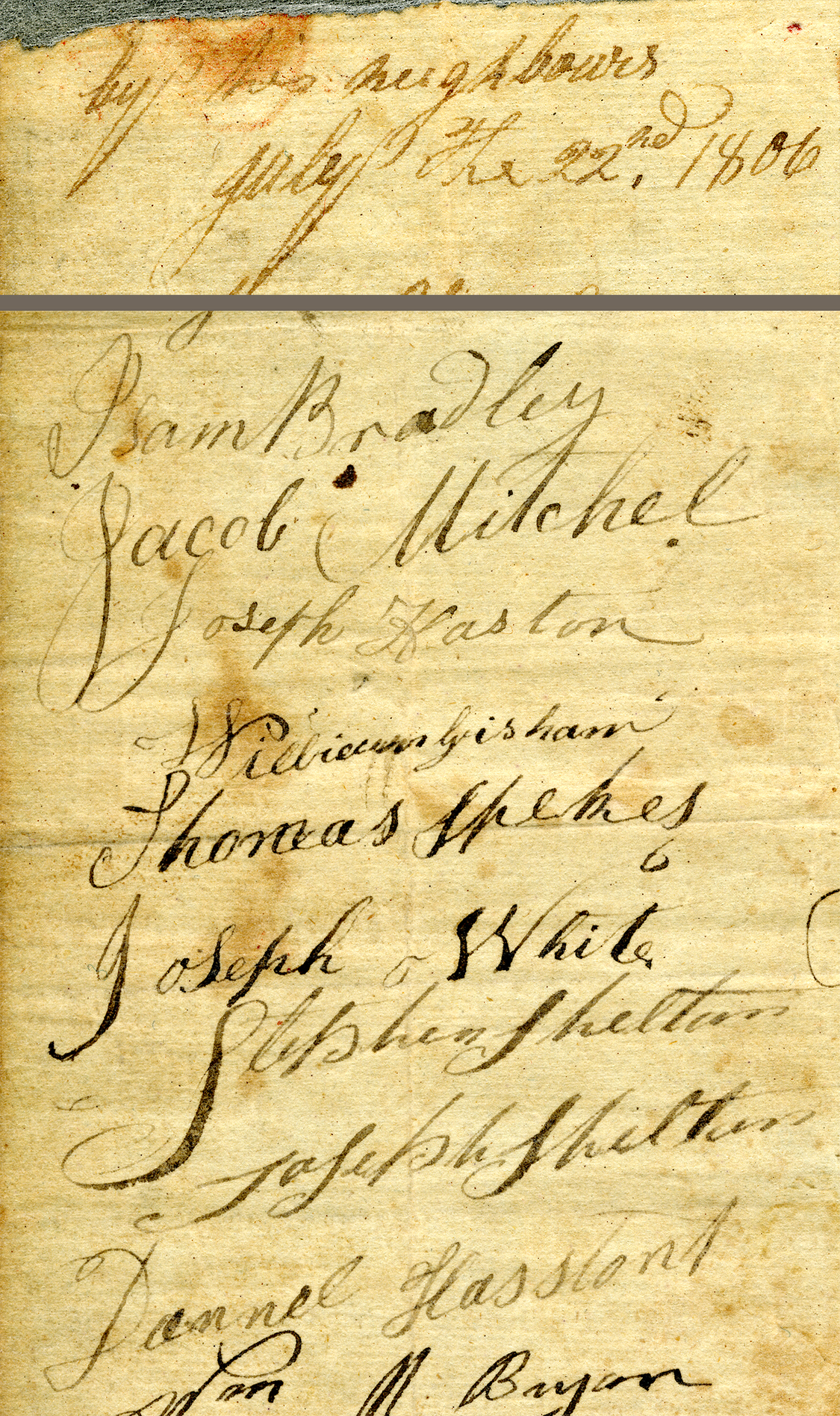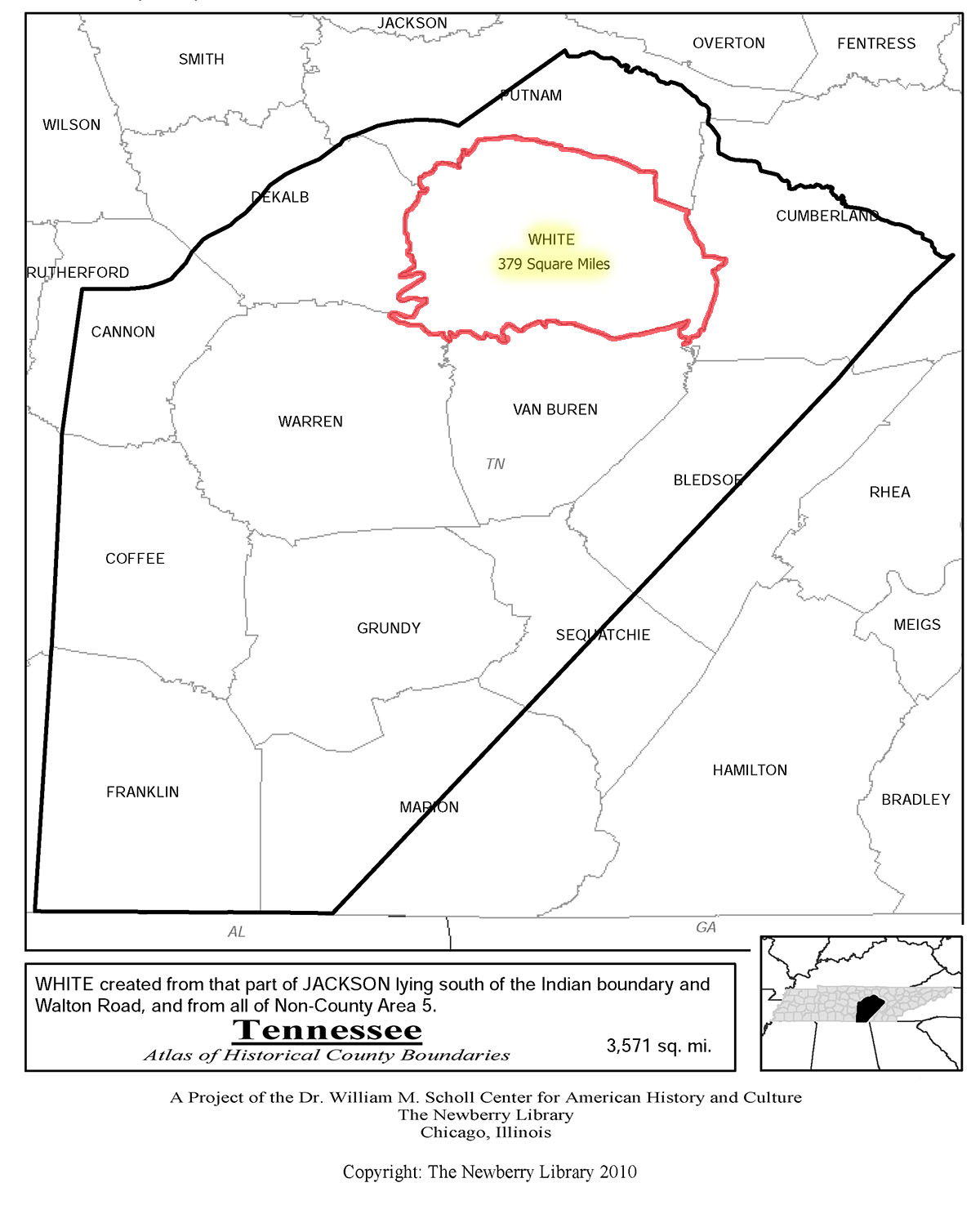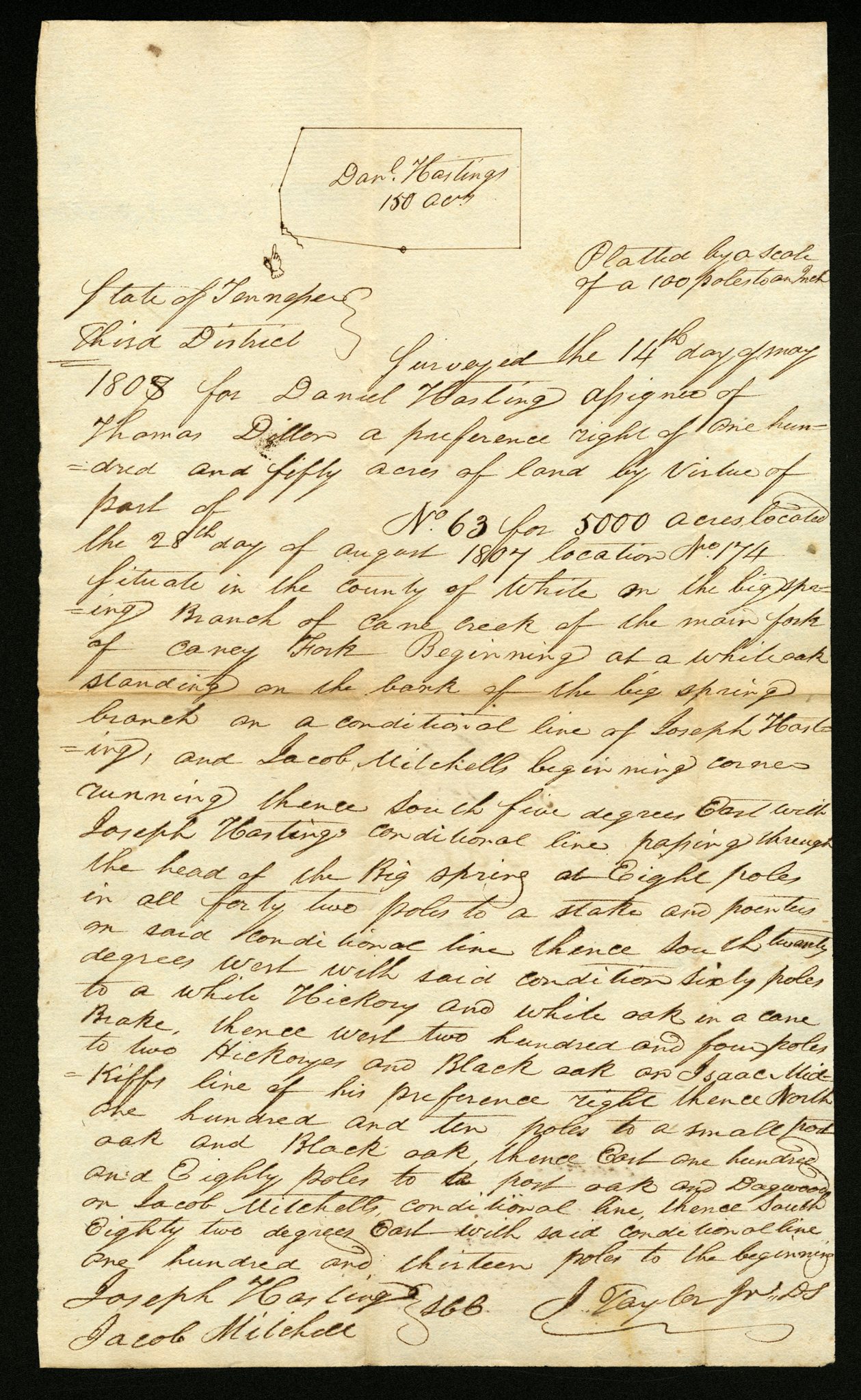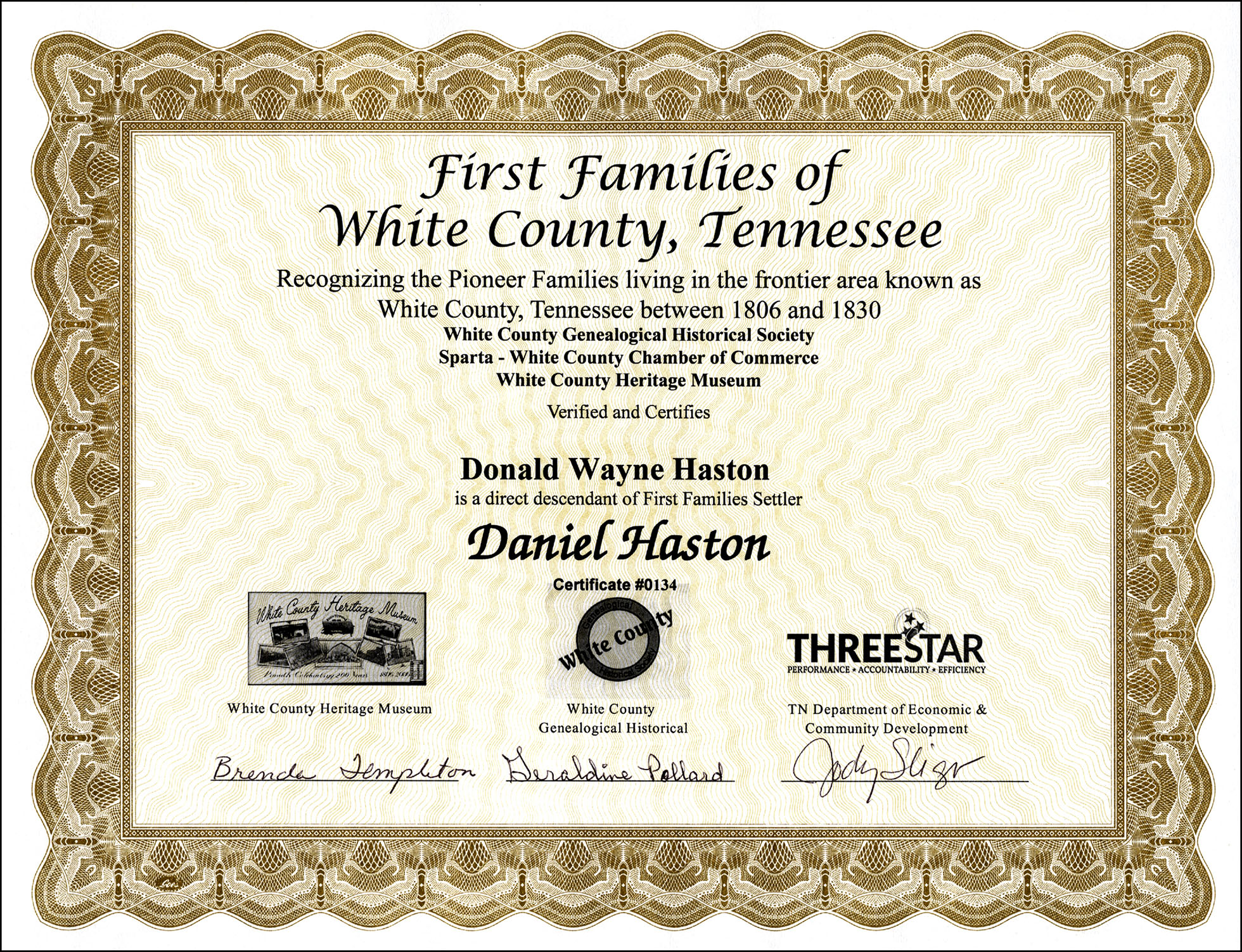32 - Daniel Haston, A Founding Petitioner for White County, TN

The first record we have of Daniel Haston in (what became) White County, as well as some of his family members and friends, is the petition to create White County on July 22, 1806.[i] Four of the 155 names on the petition were Isam Bradley, Jacob Mitchell, Joseph Haston, and Daniel Hasstont, all of whom were identified in the previous article.
[i] Legislative Petition # 5-1-1806, “Petition for the Formation of White County from Jackson County, Tennessee.” (Nashville, TN: Tennessee State Library and Archives).
On April 25, 1806, President Thomas Jefferson ratified and proclaimed the October 25, 1805 Treaty with the Cherokee.* On and around July 22, 1806 a petition was distributed and signed by 155 residents of then-Jackson County, including Daniel Haston (Dannel Hasstont), Joseph Haston, and two of their Big Spring Branch settlement cohorts. This petition resulted in the establishment of White County—“Petition from Jackson County asking the county be divided and a new county established.”[i]
[i] Tennessee Legislative Petition # 5-1-1806, Petition to Create [White] County.
Why was his surname spelled “Hasstont“? It was because his original name was “Hiestand,” but often his German-speaking family added a “t” to the end. This wasn’t Daniel’s personal signature–it was written by someone who spelled it roughly like he heard it when Daniel, with his German accent, pronounced it to him.
The petition was read before the Tennessee Senate and House of Representatives on August 11, 1806, by Elijah Chisum. Chisum was a representative for Jackson, Wilson, Smith, and Sumner counties and later lived and died in White County. The petition was received favorably and a month later, September 12, 1806, and the General Assembly passed an act to form White County.
The name of “White County” was specified in the General Assembly’s act, but unfortunately the reason for the name was not stated. Since it was common to name counties after famous men, especially men who were renowned for their leadership in the American Revolution, the establishment of the United States, or contributions to the settlement or early development of the state, we can be reasonably certain that White County was named to honor some man—but what man? Three men have been suggested in various sources: John White (popular view since Monroe Seals wrote History of White County), General James White of Knox County, TN (most probable view as per evidence), and the general’s son, Hugh Lawson White (too early; his accomplishments were limited in 1806).
In order to be as accessible as possible to all citizens of a county, county seats are supposed to be located somewhere near the center of the county. That was particularly important in an era when transportation was very difficult. Rock Island is located at the northeastern edge of now-Warren County, near where White, Warren, and Van Buren counties come together. Although not in the exact center of the territory of the original White County, the first seat of government for White County at Rock Island was probably fairly close to the center of the more populated area of White County in 1806.
Original Boundaries of White County, TN
At the time of its creation White County included a very large area, extending all the way to the southern border of Tennessee.

Less than 15 months later, White County was reduced from 3,571 square miles to 911 square miles. Warren County was created out of White County on November 26, 1807 and much of the southern and eastern portions of the original White County reverted to non-county status. Because Rock Island was in Warren County after the creation of that county, it was necessary to find a new location for the county seat of White County.
On the first Monday and Tuesday (January 1-2) of 1810, these seven men were chosen to be Commissioners to lead White County in the establishment of a permanent seat of justice: Thomas Bounds, Aaron England, James Fulkerson, Nicholas Gillentine (father-in-law of Daniel Haston’s son Jesse Haston), Turner Lane, Alexander Lowrey and Benjamin Weaver. A general site on the Calfkiller River was selected to establish the new county seat.
But would the town be located on the east or the west side of the river? The Commissioners put that decision to a vote and the east side was chosen. A log courthouse and jail was built in 1810. The courthouse was erected at a cost of less than $5,000 and was replaced by a two-story brick building in 1815, which stood until 1894.[i] Sparta was officially incorporated in 1813.
[i] “Commissioners Erect a City.”
White County was eventually reduced to 379 square miles, as several new counties were formed around it, with each new county taking a chunk of White County: Warren County (southwest) in 1807, Dekalb County (west) in 1838, Van Buren County (southeast) in 1840, Putnam County (north) in 1842, and Cumberland County (east) in 1855.
Daniel Haston's 150 Acres Survey and Grant #535
As mentioned in the previous article, Daniel Haston “squatted” on land near the convergence of Cane Creek and the Caney Fork River in what is now known as Cummingsville of Van Buren County. Contrary to what some have said, his 150 acres there had nothing to do with a military bounty land grant. He acquired the land from Thomas Dillon, a land speculator. But he was granted a “preference right” for locating and settling on the land prior to the establishment of the county–when it was still Cherokee territory.
On September 26, 1808, Tennessee Governor John Sevier officially issued Land Grant # 535 to Daniel Hastings which conveyed a tract of 150 acres, as far as we know it was the first land he ever owned.[i]
[i] Record Group 50, Roll 25, Book A, page 224. (Nashville, TN: Tennessee State Library and Archives)
Here’s the survey that led to Daniel Hastings (Haston) receiving Grant #535.

Become a Member of First Families of White County, TN

If you appreciated this article, please share it with others who might also enjoy it.

